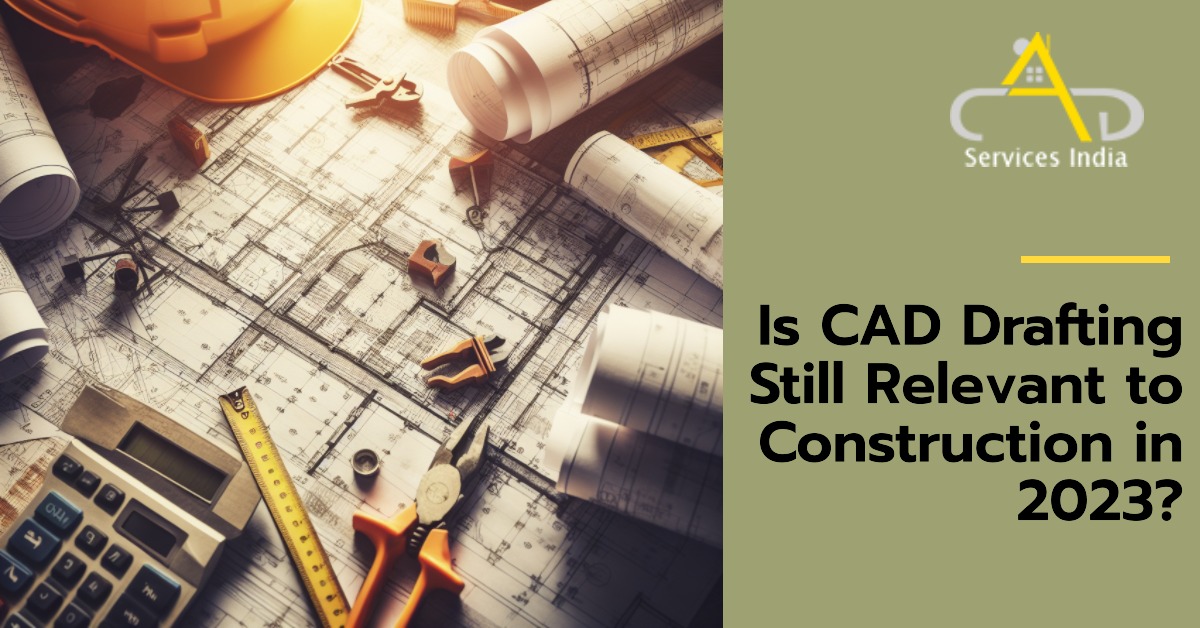
In the dynamic realm of construction technology, where innovation is the norm, the question of CAD’s relevance in 2023 amid the rise of Building Information Modeling (BIM) is both timely and crucial. While BIM has garnered significant attention for its collaborative and data-rich capabilities, we cannot overlook the enduring power of Computer-Aided Design (CAD). This blog aims to shed light on why CAD, a longstanding cornerstone in the world of drafting, remains not just relevant but indispensable in our tech-savvy era. We’ll explore how CAD’s precision, simplicity, and specialized applications contribute uniquely to certain industries, offering a perspective that challenges the notion of an outright replacement by BIM. Join us on this journey as we navigate through the intricacies of CAD, illustrating why, in the face of modernity, simplicity sometimes proves to be the ultimate sophistication.
In the Evolution of Design Technologies, we witness the transformative journey from traditional drafting to the advent of CAD. As BIM strides into the spotlight, it’s essential to recognize CAD’s historical significance and its pivotal role in shaping precise 2D and 3D designs. While BIM introduces collaborative possibilities, CAD’s simplicity, accessibility, and ability to cater to specialized needs set it apart. Let’s delve deeper into CAD’s strengths, demonstrating its capacity to complement and enhance our design processes in a tech landscape that constantly evolves but values the enduring foundations of innovation.
Table of Contents
CAD’s prowess in providing meticulous details is unparalleled. In intricate projects demanding precision in both 2D and 3D designs, CAD Drafting Services are the go to answer. Consider scenarios like custom manufacturing or projects requiring complex, detailed components. CAD’s ability to create highly detailed representations ensures accuracy and adherence to specifications.
One of CAD’s enduring strengths is its user-friendly interface. Unlike some advanced BIM tools that may require extensive training, CAD is often more accessible. This simplicity becomes crucial in projects demanding rapid design iterations or in situations where a straightforward approach is preferred.
CAD’s versatility allows it to cater to specific industry needs. In disciplines like electrical design or piping layouts, where specialized applications are essential, CAD remains unmatched. Tailoring CAD to meet the unique requirements of various civil engineering disciplines makes it an indispensable tool in the hands of professionals.
Projects often operate within budget constraints, and in such cases, opting for CAD over more complex BIM Modeling Services can be a strategic choice. The cost-effectiveness of CAD doesn’t compromise the quality of design, making it an attractive option for projects where efficiency and precision are paramount but budget considerations cannot be ignored.
In these scenarios, CAD not only holds its ground but emerges as the preferred choice, showcasing its resilience and adaptability in addressing the diverse demands of modern construction projects.
Numerous infrastructure projects and existing designs are built on CAD-based foundations. Transitioning entirely to BIM might pose challenges, both financially and practically. CAD’s compatibility with legacy systems makes it an invaluable asset for the industry, ensuring a smooth transition and coexistence with newer technologies.
One of CAD’s enduring strengths is its simplicity, making it more accessible to professionals across various disciplines. Training existing staff in CAD requires less time and resources compared to the in-depth training often needed for advanced BIM tools. This ease of training ensures a smooth transition for teams, minimizing downtime and maximizing productivity.
The versatility of CAD extends beyond its ease of use. Professionals with diverse backgrounds, including architects, engineers, and drafters, can quickly become proficient in CAD. This versatility in skill sets is invaluable in collaborative projects where individuals with different expertise come together to contribute to the design process.
As we contemplate the future of construction technology, it’s evident that CAD remains a pivotal player in shaping the landscape. The question is not whether CAD will persist, but how it will continue to evolve and complement emerging technologies.
CAD software continues to undergo advancements, integrating artificial intelligence, machine learning, and automation. These innovations enhance the precision and efficiency of design processes, ensuring that CAD evolves as a sophisticated tool that aligns with the demands of modern construction projects.
The future sees CAD and BIM working in tandem more seamlessly. Rather than a binary choice between the two, the industry will witness enhanced integration, leveraging the strengths of both CAD’s detailed design capabilities and BIM’s collaborative information-sharing features. This synergy will be crucial in achieving a comprehensive and efficient approach to project development.
In conclusion, the future of CAD in construction is dynamic and promising. As the industry embraces new technologies and methodologies, CAD will evolve to meet the challenges, solidifying its role as an indispensable tool for designers, engineers, and architects alike. It’s not a matter of choosing between CAD and emerging technologies; rather, it’s about recognizing the symbiotic relationship that allows each to enhance and complement the other in the pursuit of innovative and sustainable construction practices.